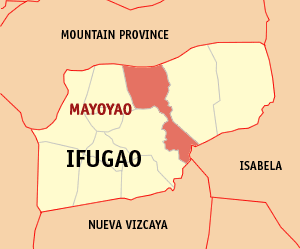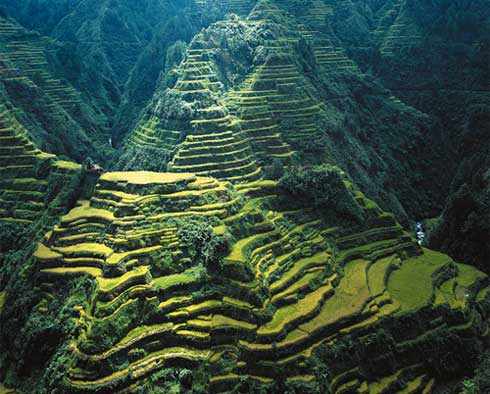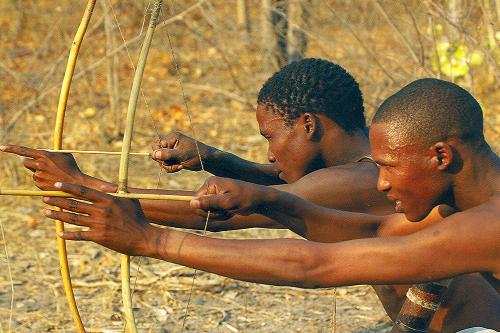Week 1:
Ifugao
Week 2:
Environment
Geographical location: Ifugao is a province located in the Philippines. This province covers about 262,820 hectares of land. Located in Luzon it borders Isabela on the east, Benguet on the west, Nueva Vizcaya on the south, and Mountain Province on the north. The area the Ifugao occupies is characterized by forests, rugged terrain, and river valleys.
Climatic description: Because of the geographic location , the highlands, Ifugao offers both a dry and wet season. The area experiences temperate cool climate with a dry season that lasts from January to May and a wet season from May to December. It sees an average of about 100 to 125 inches of rainfall yearly and has an average of 20 degrees celsius.
Population Setting: The Ifugao live in both a rural and urban setting. The Ifugao in its surroundings have other multiple provinces near it so they are not completely isolated but even so they do not experience high levels of competition for resources with the other provinces.
Flora and Fauna: For food the Ifugao go hunting for wild pigs, deers, and fruit bats which are local in the region. But the Ifugao are famous for their rice terraces and these make up their main agricultural product.
Environmental Stresses: Considering that the area is mountainous and sees heavy rainfall, erosion and landslides are a problem for the Ifugao. These can become serious problems when either of the above mentioned causes transportation and access roads to be blocked and when the rice terrace walls collapses. They also experience the extremes of both dry and wet weather. To adjust they have fixed their planting calendar to better coincide with the changing weather conditions, planted more plants, created wells, and eat fruits to fight colds.
Adaptations
Physical:
- The color of their skin is a sign of adaptation to the extreme heat the region experiences during the summer drought months.
Cultural:
- The Ifugao eat a lot of fruits that contain high levels of vitamin C so that it can help them fight cough and cold which is a risk for them because of the extreme weather conditions they have.
- The Ifugao plant a lot of trees in their backyards to help reduce the impact of hot temperatures.
- They avoid the use of spring water and instead use deep wells for water to better avoid possible water contamination which is an effect of the climate change.
- They have shifted to less riskier forms of agriculture due to the weather.
Week 3
Language: The Language of the Ifugao change from village to village but they are all from a form of Malayo-Polynesian, Austronesian. They have an alphabet similar to what is used in the U.S. with a few letters missing. Theirs include: A, B, D, E, G, H, I, K, L, M, N, Ng, O, P, T, U, W, and Y.
Gender Roles: There are only two gender roles among the Ifugao. Women and men both work together in farming and livestock. The roles aren’t entirely strict as the women do help the men with the work. Although, men are the ones that hunt while women are the ones that weave. The division of labor is divided among the men and women and this balance creates of division of labor without repercussions. So in affect, they compliment each other. Gender roles are passed on as the children get older. For example, boys start to hunt with their fathers while the girls stay at home to learn how to cook and clean. Recently though, the young are receiving more formal training so more and more are leaving the regions to find work elsewhere.
From reading “The Blessed Curse” I think the protagonist might be excepted because the Ifugao don’t have a very strict system when it comes to their gender roles. Both women and men work together and the only difference is in their practice of hunting and weaving.
Week 4
Subsistence: Rice is their main agriculture and thus it is also their main subsistence. Aside from that, they hunt wild pigs and other animals local to the region. Vegetables are also a part of their diet. They eat a lot of fruits that are high in vitamin C to help fight coughs and colds.
There is a division of labor among genders but not entirely a huge one since women also help out their husband with agriculture.
The Ifugaos are relatively healthy with their balanced diet of agriculture and hunting but they do experience problems in the throat and gums due to smoking and tobacco chewing.
Economic: The Ifugaos produce surplus during good harvest season but that doesn’t alway occur. During times when it isn’t surviving is difficult from some and so they use a system that redistributes goods to others. Wealth, on the other hand, is passed down from family to family, inherited. And that too can be redistributed. They do not have a form of their own currency and instead engage in direct trade or use the country’s currency for trade.
Week 5
Marriage: Marriage is a form of alliance done between families. Monogamy and polygamy is both practiced among the Ifugaos, although polygamy done by the rich. Also, marriage between cousins are not allowed and punishable with a fine but marriage to a second cousin is allowed. Before marriage it is tradition that a man and wife undergo a sort of trail where both live together for a period of time first. The goal of marriage is to have babies. So if the woman does not get pregnant then the man has the option to leave the woman but if the woman does get pregnant then the marriage goes through. Dowries are also used in this culture and are given to the bride’s family.
Marriage can be done for the reason of economic exchange but usually done by the wealthy and isn’t widely practiced by everyone. Marriages are also preferred within the same tribe to avoid conflicts but recently, more are marrying outside. Homosexuality, also, is not looked upon highly. A conservative culture, the Ifugaos see men as men and women as women and their desires to be of the other sex.
Kinship:
The Ifugaos keep close family ties and to this day those ties are still observed and is very important for them. With that said, the elders are the one that hold the most authority in the family. Inheritance goes through families and match with the descent patterns. Wealth comes from what was passed down to them.
Week 6
Social Organization: They have a stratified culture. Rank is dependent upon how much a person has. The more wealthy a person then the more power. Being wealthy includes having land, livestock, and slaves. The wealthy are the highest ranks while the slaves are the lowest. Slaves are sold from owner to owner like property but it is not hereditary. Wealth, mentioned earlier, is inherited.
Political Structure: The Ifugao do not have a much of a formal political system. Before they were leaded by rice chiefs but even they did not have a lot of authority. So, instead, kinship was the main way to unite people. Today, Ifugao is divided to municipalities so that it has a better control.
The Role of Violence: Conflicts among tribes still exist but wars are less so than it was in the past. The Ifugao had their own laws aside from that of the country’s laws. Murder was dealt according to the Ifugaos laws and punishable under that instead of the Philippines laws. Feuds often existed between kinships, intermarriage, or from outside sources. Because of their violence they were often feared by outsiders.
Week 7
Religion: The Ifugao practice animism and to them the panyeon and diwata are the spirits of nature. They give offerings in respect to the spirits and to their ancestors. They strongly believe that their offerings will affect their lives. And as such, disrespect can also cause karma for them. It can affect their harvest, health, and family. Ifugao practice polytheism which include Monlolot, Alog, Yogyog, and and Lumadab to name a few. Religion to them is very important. It is a part of their everyday life in the way of their gods, offerings, and prayers.
Art: The Ifugao women are known for their pottery and weaving. They also make sculptures of their dieties. They make it out of wood from narra because it stands for wealth and good life. Typically, the make sculptures of Bulul who is the god of rice. They also make rattan baskets, chairs, and tables.
Music: For music they traditionally use a nose flute called tongali. This instruments are used in part of their rituals and express their lives on song.
Performance: They do ritual dance during weddings and deaths. Aside from these events, dancing is used in their culture for rituals and to continue their traditions.
Week 8
Conclusion
The Ifugao has been affected by other cultures and in doing so the culture has seen both positive and negative impacts. A positive impact is that more and more indigenous people have received formal education so they do not have to mainly depend on agriculture for survival. They can choose to leave their ancestral land because of the new education they receive. Unfortunately this means that tribes like Ifugaos have a smaller population and more importantly they have a smaller population of young adults who will continue their traditions. Another positive affect is that they are more politically organized. Tribal wars have been put to stop because of outsider like the Philippines government and US occupation based in Philippines. Personally, I would consider the Ifugao culture not in any near danger of loosing their cultural identity. Although, I might not consider them to be thriving I am still willing to call them healthy. I say this because, recently Philippines has seen an upward trend of tourism and cultural education regarding places and cultures like these. With this said, though, I can not say that this culture is particularly strong in influencing the modern world.
Bibliography
Britannica Encyclopedia. Ifugao
Climate Change http://www.seanafe.org/files/2ndconf/parallel%20session%202B_IFSU%20Philippines.pdf
Essortment. http://www.essortment.com/ifugao---native-people-30360.html
Ethnologue. Languages of the World.
"Ifugao." Encyclopædia Britannica. Encyclopædia Britannica Deluxe Edition.
Sianghio. http://litera1no4.tripod.com/ifugao_frame.html
The Ifugao Language. www.iloko.tripod.com
TribalSite. http://www.tribalsite.com/articles/ifugao.htm






















